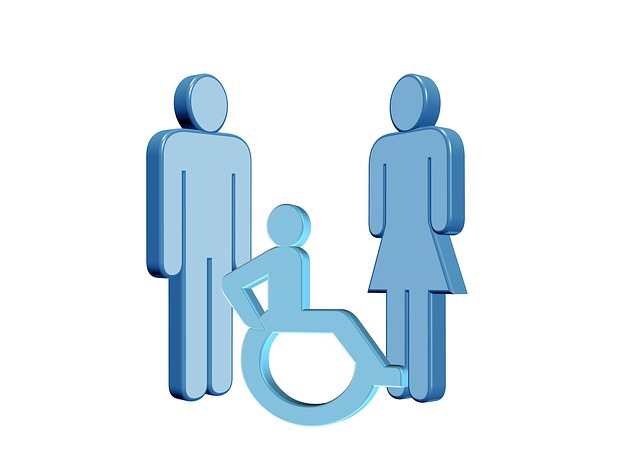Living with a chronic invisible illness is HARD! When you live with a condition that can’t be seen you have to deal with so much. Not only because the daily suffering isn’t easily explained to others, but because every where you go someone seems to be judging you. People always assume that just because you don’t appear disabled that you are just lazy. Or that you choose to be fat and lazy. They don’t understand that your life has been drastically impacted by a disease that they can’t see. They don’t know what you struggle with internally on a daily basis. They just make their opinions on how you look on the outside
This topic came to mind this past week when I saw a social media post that basically said that “disabled” parking spots should only be available between 9am and 5pm, because the disabled shouldn’t be outside of their home outside of those hours. WHAT?!?!?!? I was truly stunned and I didn’t even have words. The more I thought about it the more sad this comment made me. Not only was I sad for the ignorance of the individual who posted this, but for the fact that we have so much more work to do. I like to think that people are becoming more understanding as more research is being done on invisible illnesses. But this comment brought me back down to real life and reminded me that most people still don’t have any understanding of conditions that they can not see. This comment also made me wonder what disabled is supposed to look like or sound!
What does disabled in 2019 look like to you?!? Is it a 80 year old great-grandma with a curved spine who is hunched over her cane and shuffling? Or is it an amputee who uses a wheelchair to get around? Or maybe someone who has a service dog that goes every where with them? While those are what probably comes to mind when someone thinks of the disabled those individuals are NOT a good representation of all who are disabled. This made me wonder just how many people are living with an invisible disability. The Huff Post states, “As the folks at Invisible Illness Awareness Week figured out based on data from the 2002 US Census Bureau, 96 percent of people who live with an illness live with an invisible one, and 73 percent of people who live with a severe disability do not use devices like a wheelchair.”
After reading that article I was still left questioning how we can get this point across to the public?!? How do we make people understand? How do we remind that how you appear on the outside is not a good explanation of how you feel on the inside. You see a healthy looking, physically fit 23 year old woman on the outside but you would never know that she is crippled by mental illness! Or you work with a healthy looking 35 year old man has severe ulcerative colitis and hasn’t had a meal that didn’t make him sick in months! And you can’t forget the young mom next door who seems to have it all who has horrible pain caused by Endometriosis and had 4 miscarriages before she finally got her rainbow baby. Or the 45 year old career woman with grown children who fights every single day just to get out of bed. You would never know by looking at any of those people that they are sick because they work so hard to put on a strong facade so others don’t know their daily struggles.
Let me be honest, there have been times in my life when I saw someone get out of a car in a disabled spot and thought to myself that they look fine and obviously had to be abusing the ability to get a closer parking spot. Or internally questioned why someone was using an motorized car at the grocery store. It’s natural. We all have judged someone at some point in our lives based on what they look like on the outside. And if someone tells you they haven’t they aren’t being truthful with you or themselves. That being said, most of us who live with invisible disabilities do our best to not show our true struggles to anyone for many reasons. We don’t want to look weak. Or we don’t want our friends and family to worry so we hide how awful we really feel. And most of us you won’t see limping, or curled up in pain when we are out of the confines of our home. I read somewhere recently that 80% of those with Lupus hide their symptoms from the ones they love. Why am I telling you this? Well that’s simple, I want you to understand that just because we look okay in the outside doesn’t mean we aren’t going through hell on the inside. I want to remind you that you never know what someone is going through unless you have walked in their shoes. But what I want to really really get across is that we all need to be kinder to each other. We all need to respect each other for our differences. And mostly we need to remember that you can NEVER judge a book by its cover.
With Love,
Amber





